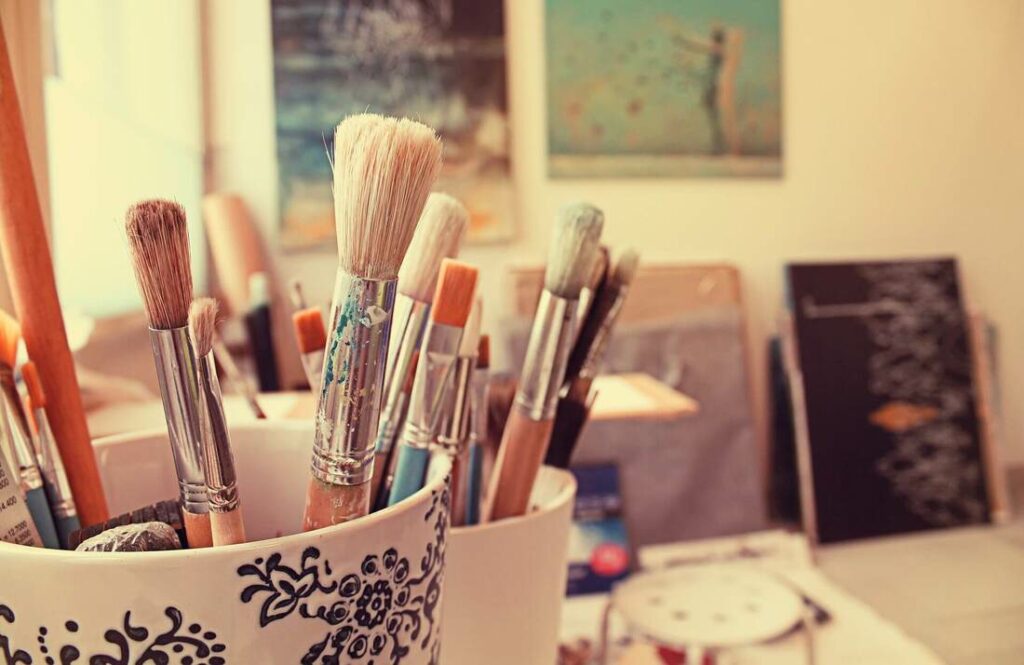Do you have a creative side but don’t know where to tap into it? Are you looking to create more art in your life, but don’t know how to get started? Do you want to turn your hobby into a full-time career? If you answered YES to any of the above questions, then reading this article is for YOU! A home art studio is an art space where you don’t have to go outside in the cold and rainy weather just to paint or draw. You don’t need expensive equipment or large spaces. All you need is yourself, some supplies, and the desire to create! It can be as simple or as complex as you are willing to make it. Below, professional artist Jared Ailstock shares his tips on how to set up a functional and inexpensive studio in almost any room of a home.

Consider the wall color
If you’re planning on doing much painting or drawing in your home art studio, you may want to choose a wall color that will guide and enhance your work. A warm wall color will inspire a warm palette, while a cool wall color will inspire a cool palette. Light walls may encourage more colorful art, while dark walls may create drama akin to Rembrandt’s. Since white doesn’t emphasise a particular color palette, it’s a versatile choice.
Find the right light
The lighting in your studio also has a huge impact on the work you produce. Having a north-facing window in your studio is ideal if you live in the northern hemisphere, as north light fluctuates least throughout the day; in the southern hemisphere, south light is best. Even though natural light is extremely appealing, it can be difficult to work with in the studio. The light tracks through the room during the day, giving palette colors a false intensity. In such a situation, painters may end up using blinds to block or diffuse the light.
According to New York-based painter Jared Ailstock, when it comes to studio lighting, LEDs may be the best choice. They are energy-efficient, cool, and capable of casting a bright, even light for 50,000 hours. A high Color Rendering Index (CRI) light will ensure that colors appear accurate under its glow. It is ideal to score 90 or higher on this 1-to-100 scale.
Invest in furniture that doubles as storage
Clutter can easily take over a studio regardless of its size, making it unpleasant to work in. Purchasing multipurpose furnishings that maximize storage can help artists avoid constantly tidying up, explains Jared Ailstock. So instead of buying a table to hold a palette and brushes, a tool cabinet on wheels may be a better choice. The table can serve as both a workspace and a drawer for storing paints, papers, and tools, and the wheels make it easy to rearrange the studio as needed.
Don’t forget about comfort
Painting or drawing in your home should never feel uncomfortable. There should be elbow room and a comfortable chair near your painting table or desk. If you are working at a desk, try to find a chair that is easy to lean back in and has a good back support. If possible, try to find a chair that is padded. If you’re not comfortable with the chair you have, it’s time to try a new one!
Bring in your personality
If your studio environment feels lonely or like a dead zone without people around, try to have some fun with the décor. If you are a color freak, try adding some color to your bedroom walls. If you are more of a clean and simple type of person, then a neutral color scheme will help you stay focused and avoid getting overwhelmed by all the colors in your studio.